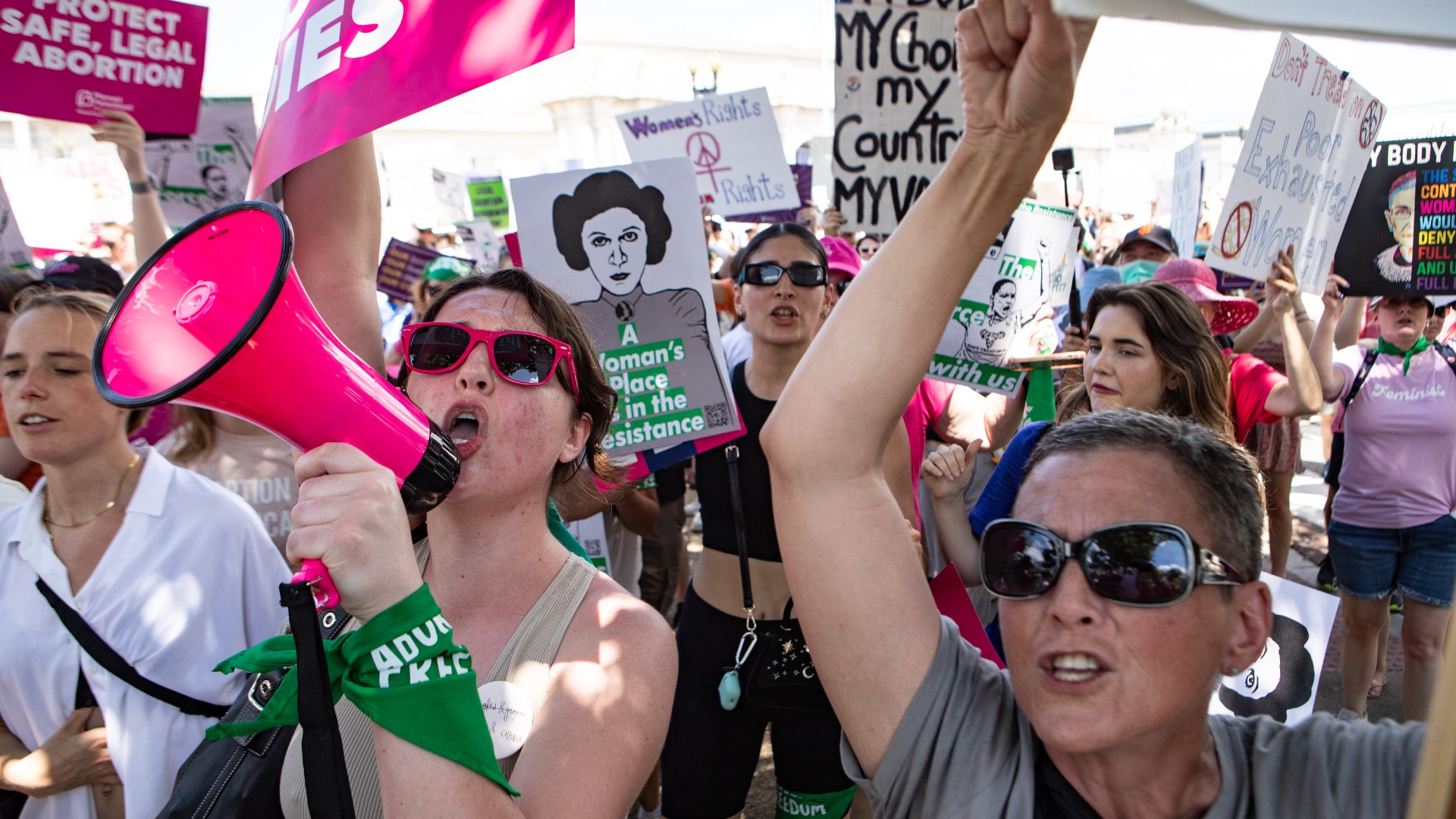Tube-tying surgeries and vasectomies skyrocketed post-Roe
A new study suggests that the overturning of Roe v. Wade in 2022 prompted a surge in young people undergoing sterilization procedures, especially women.

The number of young people undergoing sterilization procedures has "abruptly increased" following the U.S. Supreme Court's decision to overturn Roe v. Wade in June 2022, a new study shows.
The research, published Friday (April 12) in the journal JAMA Health Forum, assessed the impact of the ruling on the reproductive choices of young Americans, between ages 18 and 30. The 2022 court case, known as Dobbs v. Jackson Women's Health Organization, eliminated the constitutional right to abortion, instead allowing states to regulate the medical procedure. As of early April 2024, abortion has been banned in 14 states, with a further 11 implementing gestational limits on the procedure, according to KFF.
In the new study, scientists analyzed data from medical records to look for changes in the rate of tubal ligations — so-called tube-tying procedures — and vasectomies performed before and after Dobbs. They compared the time window of January 2019 to May 2022 with the months immediately following Dobbs, from June 2022 to September 2023.
Tubal ligations and vasectomies are surgical procedures intended to permanently prevent pregnancy. Tubal ligation involves blocking or cutting the fallopian tubes — the passageways along which eggs are released from the ovaries into the uterus during the menstrual cycle. A vasectomy, meanwhile, involves surgeons cutting and sealing the tubes that supply semen with sperm from the testicles.
Related: Telehealth abortions are as safe and effective as in-person, large study shows
Both procedures can theoretically be reversed, but this is not always possible, so doctors advise patients to think of the surgeries as permanent contraception.
In the wake of Dobbs, the researchers found that an extra 58 women got tubal ligations in the U.S. per 100,000 outpatient visits. That's about an additional five procedures a month. Around 27 more men had a vasectomy per 100,000 outpatient visits during this time period; however, month to month, this didn't amount to a statistically signicant increase.
Sign up for the Live Science daily newsletter now
Get the world’s most fascinating discoveries delivered straight to your inbox.
The findings show that many more young people are seeking permanent contraception as a result of Dobbs, likely because the ruling created a "sense of urgency" in this demographic.
"If young people feel pressured to use permanent contraception out of fear or anxiety about abortion bans, this is an issue of reproductive autonomy," Jacqueline Ellison, lead study author and an assistant professor of health policy and management at the University of Pittsburgh, told Live Science in an email.
"Our study also illustrates the disproportionate effect of abortion restrictions on women and people who can get pregnant," Ellison said. "Because cisgender men are less likely to bear the health, social, and economic consequences of compulsory pregnancy, they may not feel the same sense of urgency to undergo permanent contraception."

While many people are satisfied with their decision to get their tubes tied, research has also shown that women under 30 are twice as likely to regret sterilization as older individuals. This age group is also around eight times more likely to undergo a reversal or an evaluation for fertility treatment after the procedures.
"The saddest thing is the number of U.S. women who regret having had their tubes tied, some because they falsely believed that it was easy to 'untie' their tubes," said Dr. Eleanor Schwarz, a general internist and health services researcher at the University of California, San Francisco who was not involved in the research.
It is important that people are aware of other safe and effective birth control options, such as intrauterine devices (IUDs), which are inserted into the uterus, and arm contraceptive implants, she said. These are both forms of long-term contraception that can be removed, if desired. These devices effectively prevent pregnancy for up to five or 12 years, respectively.
"U.S. women really need easier access to IUDs and implants especially in states that are limiting access to abortion," Schwarz said.
Following Dobbs, though, experts have expressed concern that people's legal right to contraception could also soon be challenged, KFF reported. Some abortion bans could be used to restrict contraception, due to a false understanding that these drugs and devices count as "abortifacients." And in the future, a Supreme Court ruling called Griswold v. Connecticut, which cemented married people's right to contraception, could also come under fire.
Ever wonder why some people build muscle more easily than others or why freckles come out in the sun? Send us your questions about how the human body works to community@livescience.com with the subject line "Health Desk Q," and you may see your question answered on the website!

Emily is a health news writer based in London, United Kingdom. She holds a bachelor's degree in biology from Durham University and a master's degree in clinical and therapeutic neuroscience from Oxford University. She has worked in science communication, medical writing and as a local news reporter while undertaking NCTJ journalism training with News Associates. In 2018, she was named one of MHP Communications' 30 journalists to watch under 30. (emily.cooke@futurenet.com)









